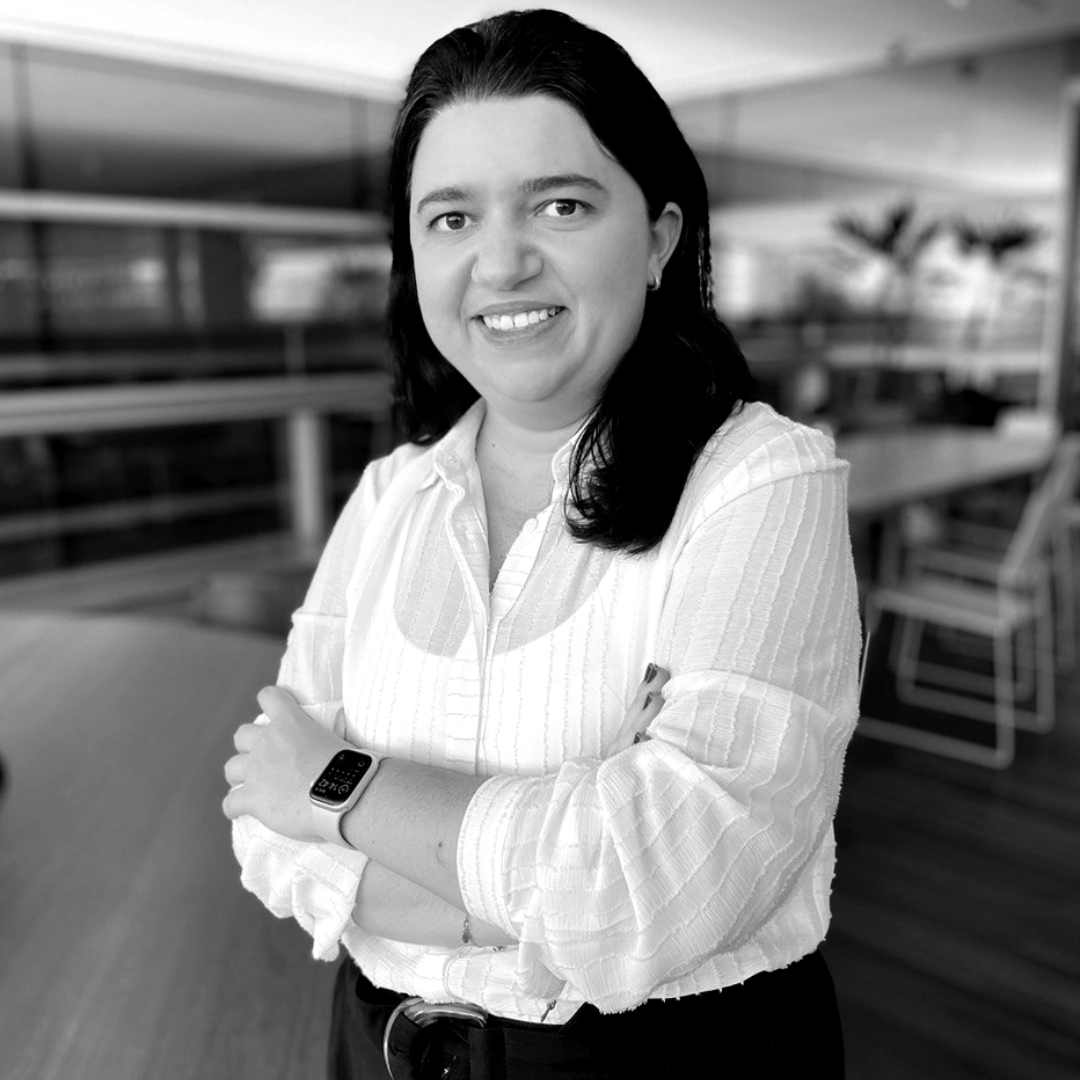Brazilian debt market has become more mature and dynamic, says Fayga Delbem
In a little over a decade, the Brazilian credit market has undergone a remarkable transformation, shifting from an underdeveloped industry with predominantly buy-and-hold positions to a more vibrant and mature sector. Fayga Czerniakowski Dalbem, a Credit Portfolio Manager at Itaú Asset and a board member at CFA Society Brazil, has accumulated more than 12 years of experience in this field, witnessing firsthand the evolution of the debt market. In an exclusive interview with Viewpoint Amec, she offers her perspective on the industry’s current state and future prospects, considering a scenario where fixed income is increasingly appealing but significant events have the potential to disrupt the market.
See the main intakes below:
Viewpoint Amec: Can you describe the evolution of the debt market over the past decade?

Fayga Czerniakowski Delbem: In 2010, the debt market was pretty much dominated by the asset management divisions of large banks, and credit hedge funds were mainly managed by these institutions. It was a concentrated market, primarily focusing on trading loans to financial institutions. During that time, there were numerous issuances of Certificates of Deposits (CDB), and in 2011, the introduction of Letras Financeiras (a financial instrument issued by financial institutions for long-term fundraising) added to the market’s dynamics. However, it wasn’t the market we see today, with independent asset management firms and various other participants.
The lack of an active secondary market has always been a challenge in Brazil. How would you describe the state of trading in the secondary market during that time?
FCD: The secondary market was practically non-existent due to the lack of liquidity. Issuances typically had short maturities, ranging from two to three years, with five years being the maximum. Few top-tier companies had access to the capital markets. Premiums were typically calculated as a percentage of the CDI (reference for most of the fixed-income securities offered in Brazil) rather than CDI rates plus a premium, as is the practice today. While there was a demand for debt assets, the number of issuers was quite limited.
When did this change begin to take place?
FCD: We experienced a significant turning point in 2019 when interest rates reached historically low levels. Investors realized that earning 103% of an extremely low CDI benchmark was no longer sufficient. It was during this time that we encountered what we refer to as a “technical crisis,” characterized by a series of withdrawals from certain credit hedge funds. As a result, fund managers were compelled to sell their assets, leading to price adjustments in the market. Prior to this crisis, the Idex credit spread index hovered around CDI + 0.70%, but it rose to around 1.30% following this event.
How did the market react during the Covid-19 pandemic?
FCD: At the beginning of 2020, there was a lack of predictability across all asset classes. We did not know what to expect as we were facing an unprecedented situation that posed immense challenges for everyone involved. Fund managers experienced significant withdrawals and were forced to sell off their assets, but there were no buyers in the market. As a result, the credit spread surged from CDI + 1.30% to CDI + 5.5% or even higher.
What changes have occurred since then?
FCD: The price adjustment that took place following the pandemic sell-off generated significant interest from new investors in the debt market for the first time. That included entities such as bank treasuries, hedge funds, and even the Brazilian Central Bank prepared to engage in trading activities if needed. Over time, we began to experience a gradual stabilization. Fund managers, who had previously struggled to find buyers when selling assets to cover withdrawals, started to find interested parties. This marked the beginning of what I call the “debt market’s beta phase”, starting in the second half of 2020 and going until the second half of 2022, characterized by a gradual reduction in credit spreads as more buyers entered the scene. The profitability of these funds became highly appealing, leading us into a virtuous cycle characterized by a beta trend.
What happened in the aftermath of the pandemic?
FCD: Towards the end of 2022, we entered what I refer to as the alpha phase, a period in which selectivity becomes crucial. We found ourselves in a time where it is paramount to carefully choose the companies, industries, and durations we want to include in our portfolios.
And then the secondary market finally flourished, right?
FCD: Indeed. The secondary market experienced substantial growth, largely driven by the entry of new participants. Five years ago, trading volumes were around BRL 5 or 6 billion. Now, we are witnessing monthly trading volumes exceeding BRL 30 billion. As the bond market deepens and becomes more dynamic, fund managers now have the opportunity to invest in diverse companies and industries. They are no longer restricted to holding bonds until their maturity date but can actively manage their portfolios.
How did this process affect the diversification of assets and products?
FCD: These developments have created opportunities for diversification across various credit risks. In the past, credit hedge funds typically had very short notice periods, allowing investors to redeem their investments within a day of making a claim. However, the landscape has evolved, and now notice periods can extend up to 180 days. Furthermore, we have even seen the emergence of gated funds.
How has the sector been responding to recent disruptive events?
FCD: In my opinion, the debt market has demonstrated a high level of maturity in its response to the events that unfolded in Q1 2023. Take, for example, the accounting inconsistencies reported by Americanas on January 11. If such an incident had occurred in 2019 or 2020, we would have witnessed a situation where concerned investors tried to sell their assets without finding any buyers. However, on the day following the announcement, we observed a market where both sellers and buyers were present for most assets. During that time, Americanas was trading at a premium of CDI + 1.90%. There were buying offers at CDI + 3.5%, but no transactions occurred because sellers were not compelled to sell at any cost. The funds were no longer mismatched, offering excessive liquidity with longer maturity assets. As a result, prices gradually stabilized around CDI + 2.20%. This showcased a market that had reached a state of stability, with buyers and sellers actively participating and achieving a short-term balance amid a significant influx of withdrawal requests.
How does the downfall of Americanas differ from the concerns surrounding companies like Light?
FCD: The case of Americanas was a specific and isolated event, whereas the concerns surrounding companies like Light required individual evaluation by each fund manager and investor. Since more fund managers invested in these companies, those who were more concerned began selling off more assets. This resulted in a secondary sell-off. Undoubtedly, the debt market is continuously evolving, and there may be further developments on the horizon. However, compared to the pre-pandemic period, the market has become more developed, largely due to the presence of new players.
Considering interest rates remain high, what are your expectations for the future?
FCD: In a high-interest-rate environment, all fixed-income assets tend to become more appealing. However, it is crucial to consider the potential impact on companies’ financial expenses if rates remain elevated for an extended period. Once again, careful asset selection becomes paramount. As we assess our portfolio, we conduct stress scenarios using various benchmark rates. Despite the circumstances, we still find the debt market attractive at present levels. Nevertheless, it is essential for analysts and fund managers assembling debt portfolios to diligently choose companies that are better positioned to navigate these conditions.
In this context, which types of companies should fund managers avoid?
FCD: In times like these, fund managers should avoid companies whose financial expenses consume their entire cash flow. When analyzing investment options, we focus on three key factors: fundamentals, technical aspects, and price. We’ve already discussed the technical aspects, as higher interest rates increase the attractiveness of fixed-income assets. Regarding fundamentals, we prioritize companies with long debt durations and ample liquidity. This allows them to navigate various economic scenarios in the coming years. Lastly, in light of the market’s 100 basis points adjustment, we recommend careful consideration when selecting investment options.

